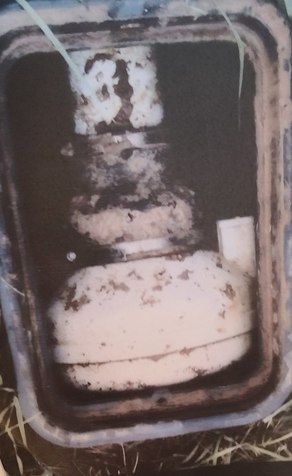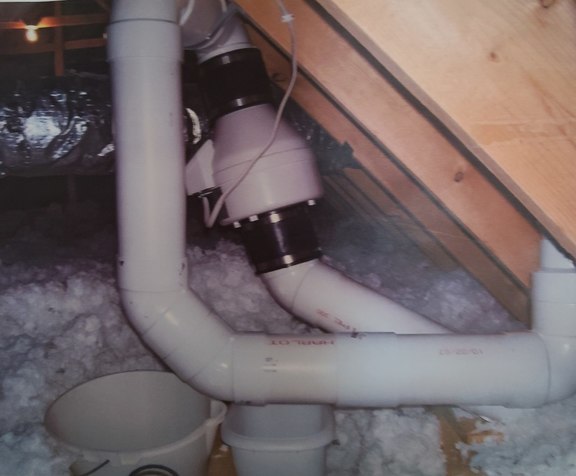-
Mitigation Company serving Pocahontas County, West VirginiaI have not yet replied to this but we could do the job. We do a lot of ASD in Residences in WV typically in Morgantown / Fairmont and surrounding. Work west to Parkersburg. Home office is Pittsburgh. Have Certified highly experienced WV Installers (must have WV certified on site during work in WV). It's beyond our typical range so charges would be higher for travel involved. We're at about 50,000 systems and 37 yrs in business in PA & WV. Since you're having trouble locating someone contact me "we"ll talk".
John Mallon
Radon Detection and Control PA &WV.
724-375-1700 contactatradondetectionandcontroldotcom -
on the passing of Dr Bill FieldSpot on Bruce!
So sorry to hear this news!
Dr Field will always be remembered as the leading authority of our time on Radon: Risk Assessment, Epidemiology, and Public Health Issues. We will also remember him as a good man and generous colleague.
We would not have this forum if not for Bill’s creation of the original Radon Listserv. That Listserv had a large and diverse group of Radon Stakeholders from throughout the Country and around the world. It was a great learning resource, debate platform, technical forum and gateway to others with radon perspectives. Dr. Field took on the immense role of host and chairperson. This sometimes-required refereeing and even banning the unsuitable posts. I was flattered when he would extend a discussion privately with me and going as far as sending technical resources (as I’m sure he did with so many others).
When he would remind us of the Listserv guidelines he would often include: “people will forget what you said, but people will never forget how you made them feel” great reminder to us all.
I suggest you all check out his Wikipedia page to remember his extensive contributions.
Dr. Bill, you will be greatly missed by so many. Thank you, our old friend and colleague, for being here.
John Mallon -
Are these changes needed?The 5 years that I was a Member of the School and Large Building Standard and chaired the Multifamily Mitigation Standard, the committees debated most of these issues. When we were finished, the Standards then went into public review cycle. I was proud to be asked by CARST to join Dr. Bill Angell and Jack Bartholomew (May he rest in peace) to teach in Canada. This was when some of the new Canadian Guidance was in development. In doing so was glad to get to know many top notch Radon Mitigators (Some on this thread).
“Reducing Radon Levels in Existing Homes: A Canadian Guide for Professional Contractors”, is a fine Publication / Standard but not a perfect set of instructions. Neither are the AARST-ANSI Standards. Problem is that structures vary. Soil, aggregates, foundations, climates, geologies air issues etc. etc. etc., create their own unique problems. Products, instruments, tools and methods are evolving. There’s no silver bullet for success, instead an accumulation of experiences and observations that hopefully will move us towards best designs and installations.
Not sure how change is addressed in the Canadian Guides, but Dallas (in this thread) has shown the way to address changes in the AARST-ANSI Standards. For those who are passionate, you will be considered and replied to in the review cycles. The AARST-ANSI Standards are fluid and designed to change as necessary.
John Mallon -
In Memoriam -- Jay F. BauderI've known Jay for 20 years+ and considered him a great friend. He's gone way too early. He has left us with some great memories and stories!
“Gone from our sight, but never from our hearts.” -
House from HeckHenri,
Most free-standing portable A/C units do exhaust hot air and cause considerable negative pressure. Although, there are units that use fresh air supply exchange to eliminate this they’re much less common. Check the specific manufacturer’s tech spec. Could be a big issue!
You said the Sub-slab material is “crushed stone” aggregate. If this is typical (without fines) and generally dry, I’d agree with Kevin, put a 2nd ASD system on the renter’s side. If correctly built, the wall between family room and apartment should be an “air tight firewall” Your current system is on the owner’s side and the renter is likely creating even greater negative pressure at times on the apartment side with the AC unit.
The apartment side should also be a high air volume fan. You said the original fan was a RP140 (too small). I’d use a RP145 at least and change the “stitch pipes” (seems very inadequate) to a 2 suction point system. To further enhance air movement volume: excavate large suction holes and ideally use 4” pipe throughout (suction side and exhaust side).
My 2 cents, since you asked and sent good comprehensive information.
Good luck!
John -
Air "Purifiers" and RadonWhy let Radon into the home and then use air filters, HEPA filters, electrostatic precipitators, paddle fans, etc., to control Radon Progeny. Simply use ASD to prevent the Radon from coming in.
-
Alarms are mandatory now on radon systemsMy takeaways from the AARST-ANSI Standards Committee: The process is very deliberate and exercises one’s consensus building skills. The completed document is something foreign to each committee member’s initial vision. The documents are the product of much debate, soul-searching and compromise but that reflects the requirements of diverse committee member positions and stakeholder reviews. No one is totally satisfied with the final product but the process teaches that the points of view and needs of the Radon Community are diverse. I met new colleagues and learned so much that I had been unaware of about the greater radon community. I recommend joining the Standards process, the experience is invaluable.
My Father told me: “A camel is a horse designed by a committee” -
Mitigating with French Drain and Weep SystemDean,
In our region the waterproofing Installers cut the concrete slab about 18 inches from the wall (in the section to be addressed) the concrete is broken up and removed leaving a trench wide enough to shovel the sub-slab material out to the desired depth. Before the perf-pipe and aggregate are placed in the trench, the Installers use a star chisel to punch holes into each hollow core of all the Concrete block. After the concrete over vapor barrier pour-back is complete, the walls are wide open to the entire wallcore structure. ASD now pulls from any wall penetrations, step cracks etc. and top blocks that are uncapped. They also includes “egg crate” (a high density polyethylene internal drainage membrane) placed against the wall from the top of the footing to about 4 inches above the slab pour-back. The egg crate opens the entire sub-slab soil air and the block core air to the basement air. Touch any of it and the Waterproofers will void the Warranty.
We address this by explaining this to the client and asking them if they have a Waterproofing Warranty. If they have a Warranty we call the Waterproofer and explain that we need to seal the top of the “egg crate”, breech the pipe, and seal the sump pump bucket assembly. If they refuse we suggest they call the client to propose their sealing solution. If the Water-proofing Company becomes difficult, we ask if they want to be responsible for a radioactive gas in the client’s house. We suggest that the Radon may actually have been caused by their system. If they refuse, we don’t take the job.
After 30+ years in business, we know most of the Waterproofers and have working relationships with them. I’ve explained a very small portion of this issue. I could write a book on the subject. -
Alarms are mandatory now on radon systemsCan’t find the pictures, Tony, did look. For all, I spent my years as Chair of the Multi-family Mitigation Standard and on the Large Building / School Mitigation Standard. My great thanks goes to those currently contributing. Lots of Monday Morning Quarterbacks with critiques ranging from constructive to offensive. Tony’s “Simple Rules for a Persuasive Argument…Dos and Do Nots” are Spot On!
My 2 Cents:
Alarms that signal the fan is not working is a good idea, but like every change will meet some resistance from Mitigators. A sticker near the fan alarm that explains that this might be temporary due to weather and, if necessary, a phone explanation with a nervous client advising to keep an eye on it for the next few days should be sufficient. We have more problems with alarming personal monitors bought by homeowners showing 4.3 pCi/l in mid-January.
John Mallon -
Minnesota Radon RulesChrys,
Wonder about the inside too! Fan must be there and 2 or 2 1/2 inch pipe? We see this sort of arrogantly misguided installs from Builders. PA Builders have been given all the resources to install correctly but do whatever they want since they are under no regulation. -
Minnesota Radon RulesThanks, Dallas,
Hey Henri, here's your Fan Coffin and I raise you a Watertrap!


(Story on the Watertrap is the Mitigator was called back when the joint began to leak onto the drywall. He put the bucket up there and told the Homeowner to check and empty as necessary) -
Minnesota Radon RulesI'm in Pennsylvania very regulated 30+ years. This pic is from another (nameless) State. Don't ask, I have no idea.
-
Survey of Radon Public Health Staff AwarenessChris,
This is critical data for analyzing the state of dissemination of Radon health risk information. It is disappointing after 30 years plus of various awareness efforts.
Thanks for the Post, We’ve still got a long road ahead!
John Mallon -
Wonder what THAT would cost?!Shared Crawlspace??? What's the Structure? Doesn't seem legal or wise. What about Fire code. How about the neighbor having an access point to your home. Listening or even seeing through floor openings. Creepy concept!
-
Crawlspace, sealing 12 mil DuraSkrim to concrete foundationRob, Do you suggest a brand?
John Mallon

Start FollowingSend a Message
- Terms of Service
- Useful Hints and Tips
- Sign In
- © 2025 Radon ListServ



